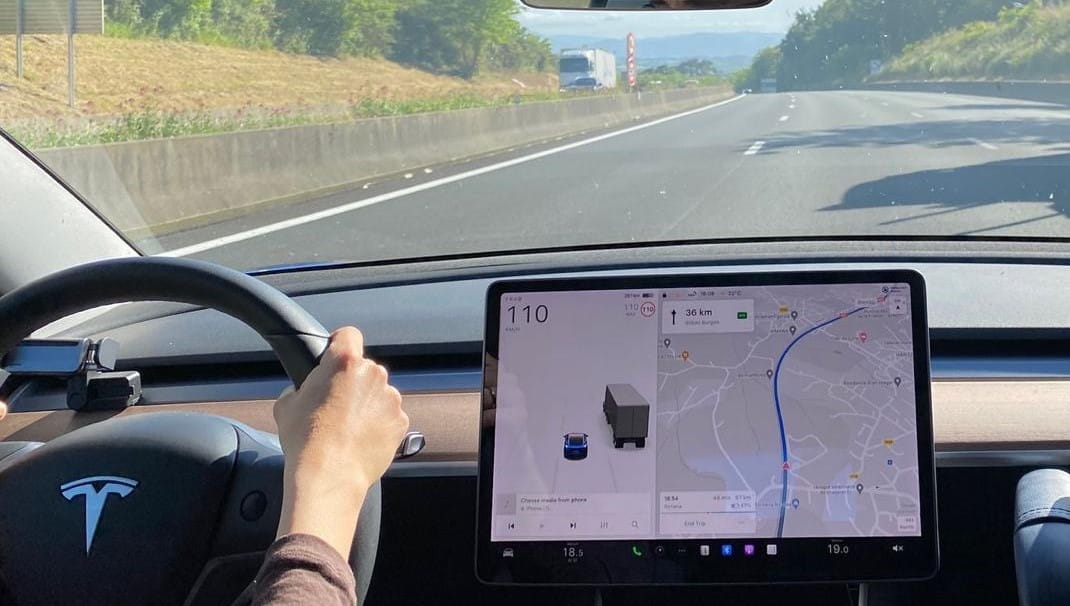
Ana's 5,000km journey in a second hand EV
Ana, a Portuguese national residing in the Netherlands, is no stranger to electric vehicles, having driven one for years. But her latest adventure was her longest yet: a multi-country summer road trip from Amsterdam to Portugal and back, nearly 5,000 kilometres in total. With her trusty six-year-old second-hand Tesla Long Range Dual Motor, Ana was ready for her trip.
"This wasn't my first international EV trip," Ana explains. "The first one was from the Netherlands to the UK. But this was definitely the longest and most complex, with multiple countries and plenty of beautiful stops along the way."
A journey through 5 countries and across 5,000 kilometres
The trip began on a Friday evening, with Ana and her family leaving Amsterdam after dinner. The first leg took them to Lille, France, without the need to stop for charging in Belgium thanks to the Tesla's long range. After a restful night in Lille, the family continued south, choosing a scenic route through Paris to Orléans, where they spent another night.
From Orléans, the road led them through the region famous for tarte Tatin and onward to Angoulême. "We stayed in a beautiful château there," Ana recalls. "The city itself is lovely and it was really easy to find charging stations." Next was Bordeaux, then across the border into Spain, through the Basque Country to the picturesque fishing town of Getaria. Salamanca followed, with its breathtaking Gothic and medieval architecture.
Finally, Ana reached the south of Lisbon, where her family is based. "We stayed a few days in the south of Lisbon and later spent time around Cascais and Sintra," she says. The way back would follow a different route, taking them through Burgos, Carcassonne, Nîmes, and Dijon before returning to Amsterdam.
While the idea of spontaneous road trips is romantic, Ana emphasises the importance of planning for long EV journeys. "With an EV, some planning is necessary," she says. "I used a combination of the ANWB app and Google Maps to map out the charging stations. I didn't use ABRP, which is often popular among EV drivers."
For the outbound trip, Ana carefully planned the cities, distances, and charging opportunities. The return trip was left more flexible until she had a better sense of how the journey was progressing. Traveling with a child added extra complexity: "You have to plan for more frequent stops and make sure charging locations are friendly and safe for children."
Easy charging in France and Spain but unexpected challenges in Portugal
Throughout France and Spain, Ana found the charging infrastructure reliable and widespread. Tesla's Supercharger network proved invaluable, often offering faster and sometimes even cheaper charging than other public stations, for Tesla drivers. "In France and Spain, I didn’t need to make many detours. The infrastructure was really good, and fast chargers made it even easier."
Portugal, however, presented unique challenges. While the country has a growing EV market, foreign drivers can face difficulties. The state-run Mobilidade Eléctrica network requires a local charge key tied to a Portuguese bank account. For foreigners, the Miio app became essential, helping Ana identify accessible charging stations. "There are plenty of chargers," Ana explains, "but the issue is finding ones that accept foreign cards or apps. It takes more time and research than people might expect."
She also noticed that in Portugal, unlike in many other countries, Tesla Superchargers are still exclusive to Tesla drivers. "I expected Portugal to be as easy as Spain & France given how many EVs you see on the road there, but there are still hurdles, especially for foreigners. It would be great to see more charging standardisation across Europe."
Lessons learned and advice for future EV travellers
Despite the extra planning, Ana says the journey was well worth it. "For me, range anxiety doesn’t exist anymore, even with a six-year-old car. You just need to invest a bit more time in planning." Her main tips for others considering a similar trip include:
- Combine charging with sightseeing or meals to make the most of the downtime.
- Always check with hotels or accommodations whether they have charging stations and if their charging stations are functional.
- Plan charging stops but stay flexible. Charging conditions may vary from what apps report e.g. charging stations not being operational or not accessible because it is in a private parking
- Understand that factors like weather, terrain, and luggage affect range, especially in hilly regions like Spain and Portugal.
As for improvements, Ana hopes Portugal will make EV travel more accessible to tourists. "Portugal is such a beautiful country with a vibrant tourism sector. As air travel becomes more expensive and people look for alternative ways to travel, making it easier for tourists travelling with EVs would be a smart move."
Would you do it again?
"Absolutely," Ana says without hesitation. "You experience so much more of a country when you can drive through it. I’ll definitely consult tools like the Ayvens' Mobility Guide in the future to better understand which countries offer the easiest EV charging experience. Even with an older EV and a child, it’s entirely doable."








